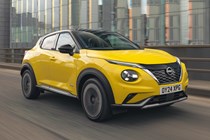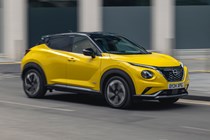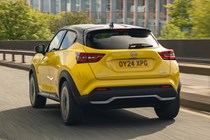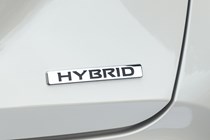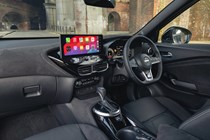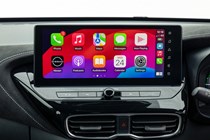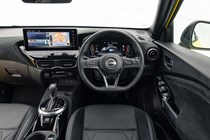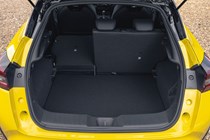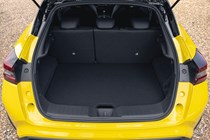
Nissan Juke engines, drive and performance

- One petrol and one hybrid option
- Available with automatic or manual gearboxes
- 1.0-litre petrol model feels sluggish
What engines are there?
Nice simple choice here. There’s a 114hp 1.0-litre petrol with a manual or automatic gearbox or a 1.6-litre hybrid that’s auto only. Diesels died with the Mk1 Juke, and there’s no punchier four-cylinder like many rivals.
Petrol engine
Performance for the 1.0-litre three-cylinder turbocharged petrol model is slightly behind our preferred engines in most rivals, such as the 115hp units in the SEAT Arona or Skoda Kamiq.
The Juke’s engine doesn’t feel quite as willing as some of those rivals, with a slightly slow response and turbine-like whirr rather than the characterful thrum we’ve come to expect from three-cylinder engines. The whistling from the turbo is also quite prominent in the cabin.

It’s far from fast, but offers plenty of performance round town, and the power arrives quite low down in the rev range making for relaxed progress as you row through the gears.
Of course, you won’t need to perform any rowing if you opt for the dual-clutch automatic. It changes smoothly when you’re already on the move, but it can be unresponsive from rest, so much so it can be very jerky and hard to manoeuvre at low speeds. Unless you really want/need an auto, we’d opt for the six-speed manual every time.
Hybrid engine
The 1.6-litre four-cylinder hybrid model was introduced in the summer of 2022 to compete with the likes of the hybrid-only Toyota Yaris Cross and Honda HR-V. It, like the petrol, remains unchanged post 2024 facelift.
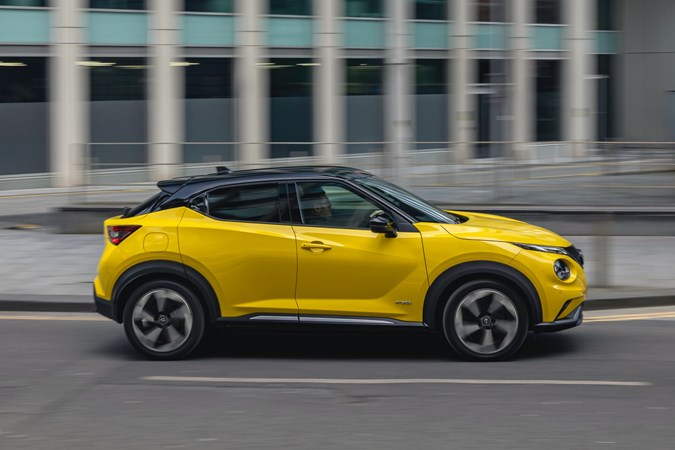
The petrol engine produces 94hp and 148Nm of torque, while the electric motor generates 49hp and 205Nm of torque all by itself. That’s about 20% more power than the petrol, and you can feel it. The 0-62mph sprint (10.1 seconds) is 1.7 seconds faster than the petrol and it’s especially prevalent below 30mph.
It’ll run in three settings depending on what’s being asked from it by your right foot. At low speeds without much acceleration it’ll attempt to crawl around using just electricity. This is quiet and relaxing.
During mixed driving it’ll use the engine to charge the battery and drive on electric. This is pretty good, fairly quiet and economical. When you accelerate harshly the engine and the battery will be deployed at the same time. This is where it begins to fall down. The huge noise coming from the engine doesn’t quite correlate to how fast you’re travelling.
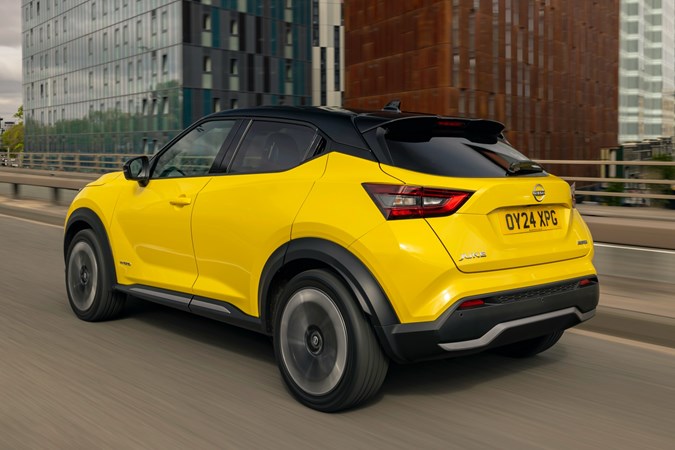
It’s not a particularly refined engine, and the hybrid system can be quite clunky in operation. It’s also not as frugal as the Yaris Cross, making it hard to recommend over the regular petrol model.
What’s it like to drive?
- Surprisingly good control for a tall car
- A Ford Puma is far more fun
- Better options for comfort
The Juke’s suspension strikes a good balance between ride and handling (as long as it’s not fitted with the larger 19-inch wheels found on Tekna and Tekna+ trims), and doesn’t disgrace itself on a winding road.
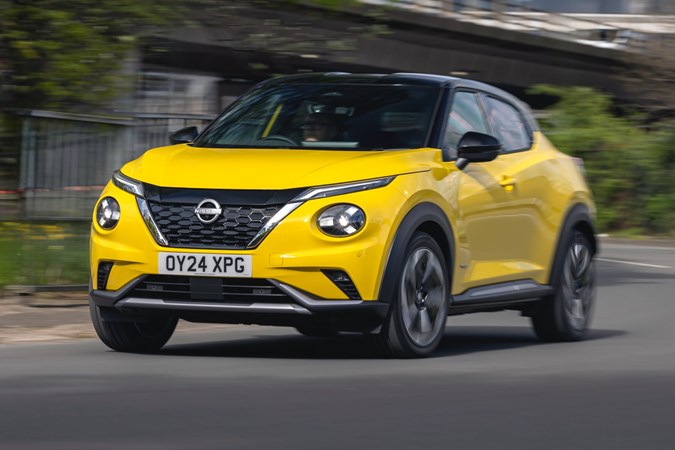
The Juke has adjustable driving modes, selected by a switch marked ‘D-mode’ behind the gear lever. It cycles through Eco, Standard and Sport modes, altering the response of the accelerator, the weight of the steering and, in automatic models, the ferocity of the gear changes. Most drivers will leave it in Standard for the majority of the time, but switching into Sport makes a marked difference that could be attractive when you get onto a really good B-road.
The steering is accurate and quite nicely weighted, giving you plenty of confidence to stick the front end into corners if you fancy more of a sporty drive. There are better options if you do like a B-road blast on occasion, though. A Ford Puma feels far more agile and is more fun to drive.
The Juke’s ride depends on if you choose petrol or hybrid. The former strikes a good balance between handling and comfort. It remains flat in the corners and grips well, but also deals effortlessly with potholes and speed bumps around town. The latter is heavier and crashes and thumps more into potholes, especially at low speed. Either way, a Skoda Kamiq is much comfier.


